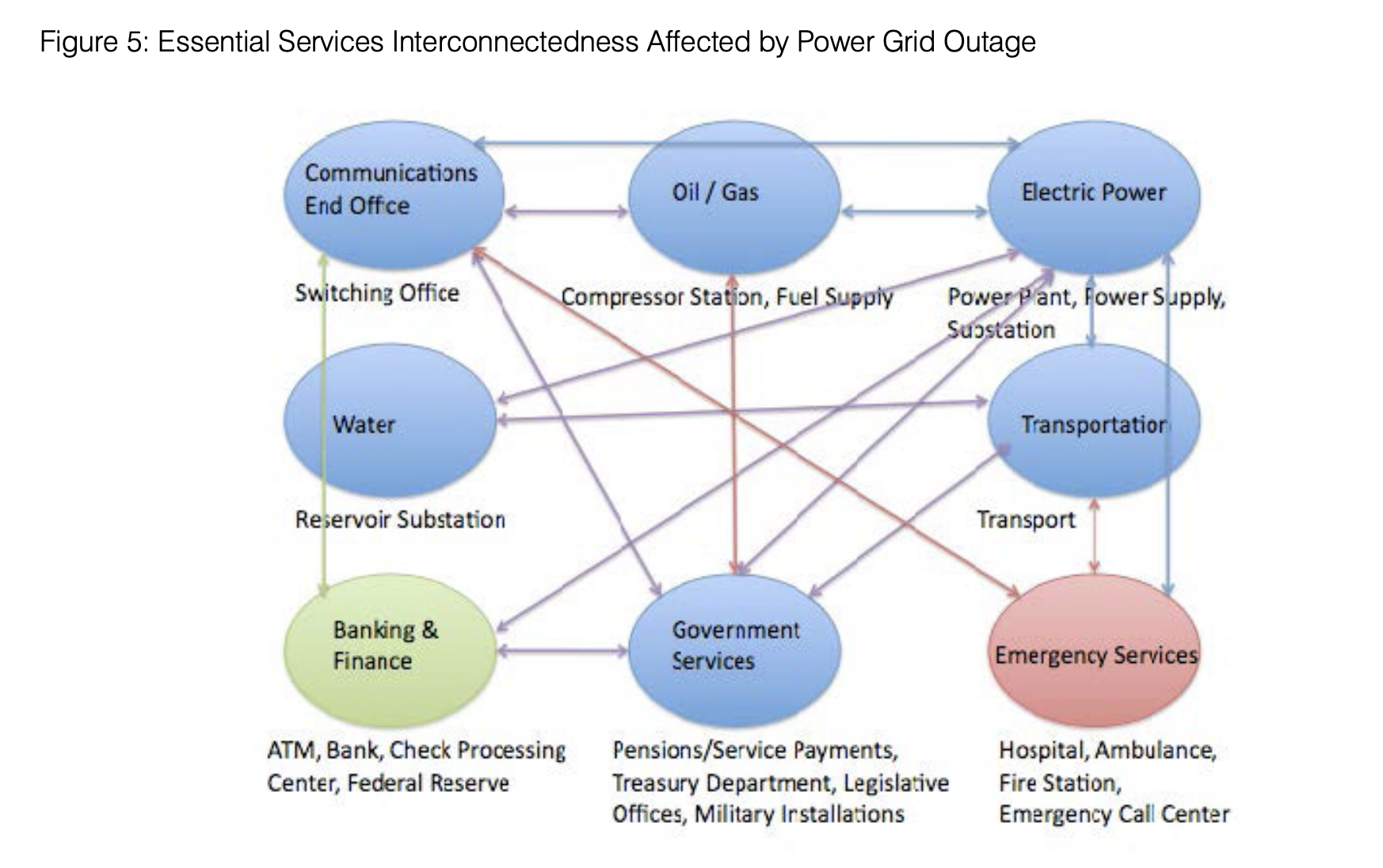By Nafeez Ahmed
According to a new U.S. Army report, Americans could face a horrifically grim future from climate change involving blackouts, disease, thirst, starvation and war. The study found that the US military itself might also collapse. This could all happen over the next two decades, the report notes.
The senior US government officials who wrote the report are from several key agencies including the Army, Defense Intelligence Agency, and NASA. The study called on the Pentagon to urgently prepare for the possibility that domestic power, water, and food systems might collapse due to the impacts of climate change as we near mid-century.
The report, titled Implications of Climate Change for the U.S. Army, was launched by the U.S. Army War College in partnership with NASA in May at the Wilson Center in Washington DC. The report was commissioned by Gen. Milley during his previous role as the Army’s Chief of Staff. It was made publicly available in August via the Center for Climate and Security, but didn’t get a lot of attention at the time.
The two most prominent scenarios in the report focus on the risk of a collapse of the power grid within “the next 20 years,” and the danger of disease epidemics. Both could be triggered by climate change in the near-term, it notes.
“Increased energy requirements” triggered by new weather patterns like extended periods of heat, drought, and cold could eventually overwhelm “an already fragile system.”
The report also warns that the US military should prepare for new foreign interventions in Syria-style conflicts, triggered due to climate-related impacts. Bangladesh in particular is highlighted as the most vulnerable country to climate collapse in the world.
“The permanent displacement of a large portion of the population of Bangladesh would be a regional catastrophe with the potential to increase global instability,” the report warns. “This is a potential result of climate change complications in just one country. Globally, over 600 million people live at sea level.”
Sea level rise, which could go higher than 2 meters by 2100 according to one recent study, “will displace tens (if not hundreds) of millions of people, creating massive, enduring instability,” the report adds.
The US should therefore be ready to act not only in Bangladesh, but in many other regions, like the rapidly melting Arctic—where the report recommends the US military should take advantage of its hydrocarbon resources and new transit routes to repel Russian encroachment.
But without urgent reforms, the report warns that the US military itself could end up effectively collapsing as it tries to respond to climate collapse. It could lose capacity to contain threats in the US and could wilt into “mission failure” abroad due to inadequate water supplies.
Total collapse of the power grid
The report paints a frightening portrait of a country falling apart over the next 20 years due to the impacts of climate change on “natural systems such as oceans, lakes, rivers, ground water, reefs, and forests.”
Current infrastructure in the US, the report says, is woefully underprepared: “Most of the critical infrastructures identified by the Department of Homeland Security are not built to withstand these altered conditions.”
Some 80 percent of US agricultural exports and 78 percent of imports are water-borne. This means that episodes of flooding due to climate change could leave lasting damage to shipping infrastructure, posing “a major threat to US lives and communities, the US economy and global food security,” the report notes.
At particular risk is the US national power grid, which could shut down due to “the stressors of a changing climate,” especially changing rainfall levels:
“The power grid that serves the United States is aging and continues to operate without a coordinated and significant infrastructure investment. Vulnerabilities exist to electricity-generating power plants, electric transmission infrastructure and distribution system components,” it states.
As a result, the “increased energy requirements” triggered by new weather patterns like extended periods of heat, drought, and cold could eventually overwhelm “an already fragile system.”

The report’s grim prediction has already started playing out, with utility PG&E cutting power to more than a million people across California to avoid power lines sparking another catastrophic wildfire. While climate change is intensifying the dry season and increasing fire risks, PG&E has come under fire for failing to fix the state’s ailing power grid.
The US Army report shows that California’s power outage could be a taste of things to come, laying out a truly dystopian scenario of what would happen if the national power grid was brought down by climate change. One particularly harrowing paragraph lists off the consequences bluntly:
“If the power grid infrastructure were to collapse, the United States would experience significant:
- Loss of perishable foods and medications
- Loss of water and wastewater distribution systems
- Loss of heating/air conditioning and electrical lighting systems
- Loss of computer, telephone, and communications systems (including airline flights, satellite networks and GPS services)
- Loss of public transportation systems
- Loss of fuel distribution systems and fuel pipelines
- Loss of all electrical systems that do not have back-up power”
Although the report does not dwell on the implications, it acknowledges that a national power grid failure would lead to a perfect storm requiring emergency military responses that might eventually weaken the ability of the US Army to continue functioning at all: “Relief efforts aggravated by seasonal climatological effects would potentially accelerate the criticality of the developing situation. The cascading effects of power loss… would rapidly challenge the military’s ability to continue operations.”
Also at “high risk of temporary or permanent closure due to climate threats” are US nuclear power facilities.



